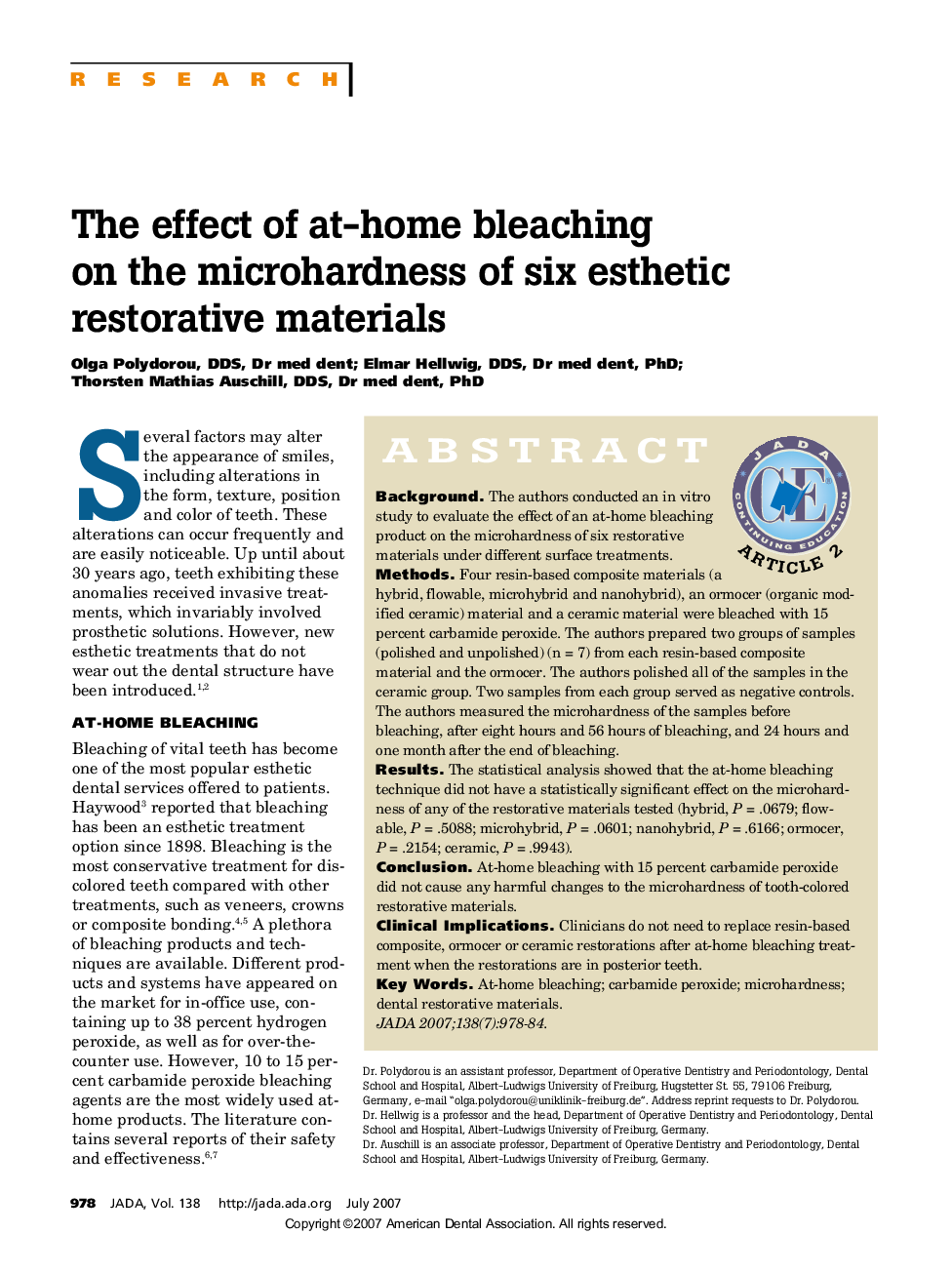| Article ID | Journal | Published Year | Pages | File Type |
|---|---|---|---|---|
| 3140404 | The Journal of the American Dental Association | 2007 | 7 Pages |
ABSTRACT BackgroundThe authors conducted an in vitro study to evaluate the effect of an at-home bleaching product on the microhardness of six restorative aterials under different surface treatments.MethodsFour resin-based composite materials (a hybrid, flowable, microhybrid and nanohybrid), an ormocer (organic modified ceramic) material and a ceramic material were bleached with 15 percent carbamide peroxide. The authors prepared two groups of samples (polished and unpolished) (n = 7) from each resin-based composite material and the ormocer. The authors polished all of the samples in the ceramic group. Two samples from each group served as negative controls. The authors measured the microhardness of the samples before bleaching, after eight hours and 56 hours of bleaching, and 24 hours and one month after the end of bleaching.ResultsThe statistical analysis showed that the at-home bleaching technique did not have a statistically significant effect on the microhardness of any of the restorative materials tested (hybrid, P = .0679; flowable, P = .5088; microhybrid, P = .0601; nanohybrid, P = .6166; ormocer, P = .2154; ceramic, P = .9943).ConclusionAt-home bleaching with 15 percent carbamide peroxide did not cause any harmful changes to the microhardness of tooth-colored restorative materials.Clinical ImplicationsClinicians do not need to replace resin-based composite, ormocer or ceramic restorations after at-home bleaching treatment when the restorations are in posterior teeth.
